
Your Results:
The most important part of your screening.
After you get screened you will receive an easy to read summary of all your test results in your personalized portal or via mail if you choose. Your results are designed to be shared with your doctor to address any concerns.
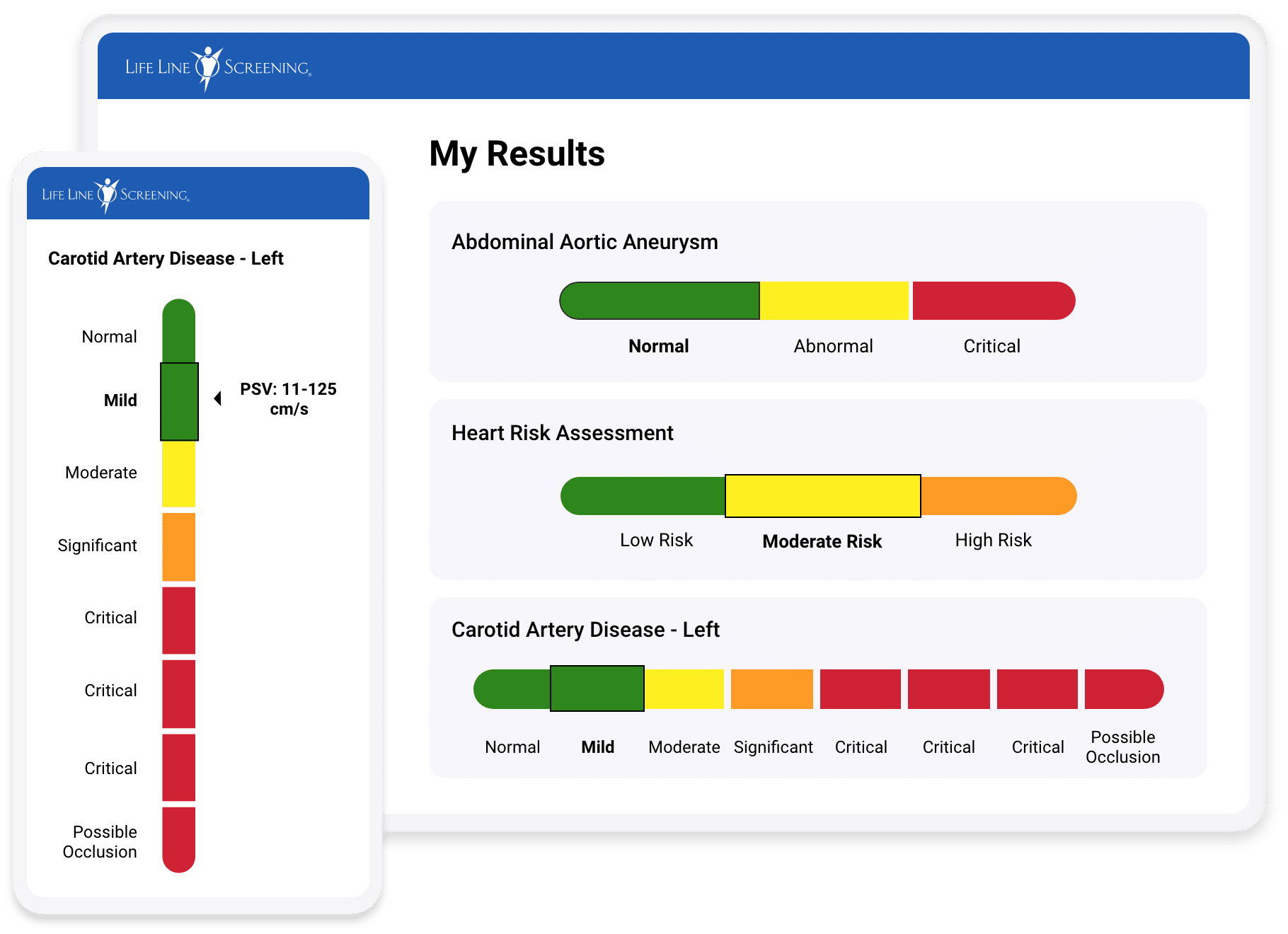

Your Results:
The most important part of your screening.

After you get screened you will receive an easy to read summary of all your test results in your personalized portal or via mail if you choose. Your results are designed to be shared with your doctor to address any concerns.
Our commitment to quality & accuracy
Life Line Screening is dedicated to providing health information our customers can trust, with highly trained staff and in environments that are safe and comfortable.

CLIA Accredited
Our ultrasound and medical technicians conduct all screenings according to strict standardized protocols. All vascular screening sonographers undergo rigorous education and training to ensure the highest clinical standards are met. Our laboratories are Clinical Laboratory Improvement Amendments (CLIA) accredited.

Board Certified Physicians
Board-certified physicians review all results of Carotid Artery Screenings, Abdominal Aortic Aneurysm Screenings, and Atrial Fibrillation Screenings. We observe the most up-to-date recommendations for classification of normal and abnormal results. Our protocols ensure high accuracy and reliability.
How to get your results
We’ve made it easy to access your results online through the My Life Line results portal. Within 10 days of your appointment, your test results will be ready to view on My Life Line.


If you already registered through the portal, simply log in here using the credentials you created during registration. You can reset your username or password if necessary. If you haven’t registered yet, follow these steps to access your results:
- Check your inbox for an email previously sent to you with this subject line, “How to View your Results Online with My Life Line” and follow the easy steps to set up your profile and access the portal.
- If you encounter any difficulties during this process, please call us at 833.445.0236 for help.
- Alternatively, if you prefer a hard copy of your results, we offer the option to receive them via postal mail for a nominal fee of $15. This fee covers processing, printing, postage, and delivery. If you would like to choose this option, please call 833.445.0236.
We encourage you to share your results with your physician.
How to read your results
Your screening test results will be specific to you and should be shared with your primary care physician. If we see something we feel should be addressed urgently by your doctor, we will tell you at the time of the screening.
What your results look like:
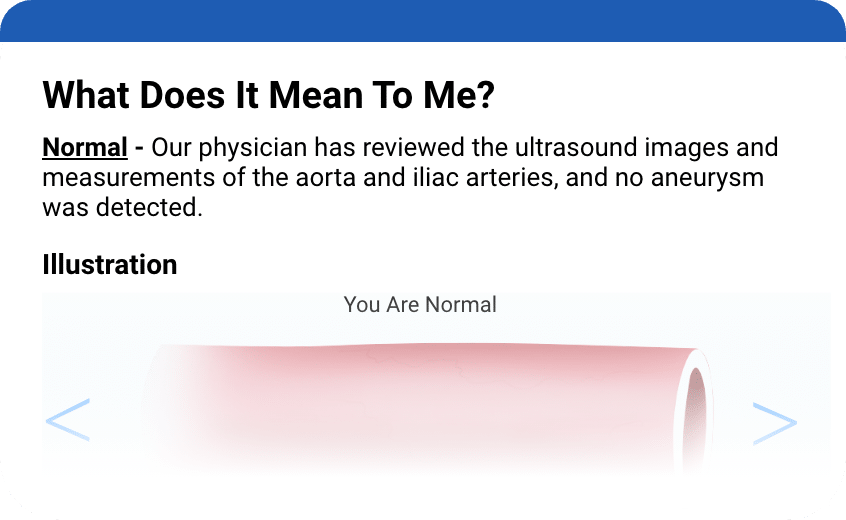
You will see a section on each condition for which we screened and what it means to you.
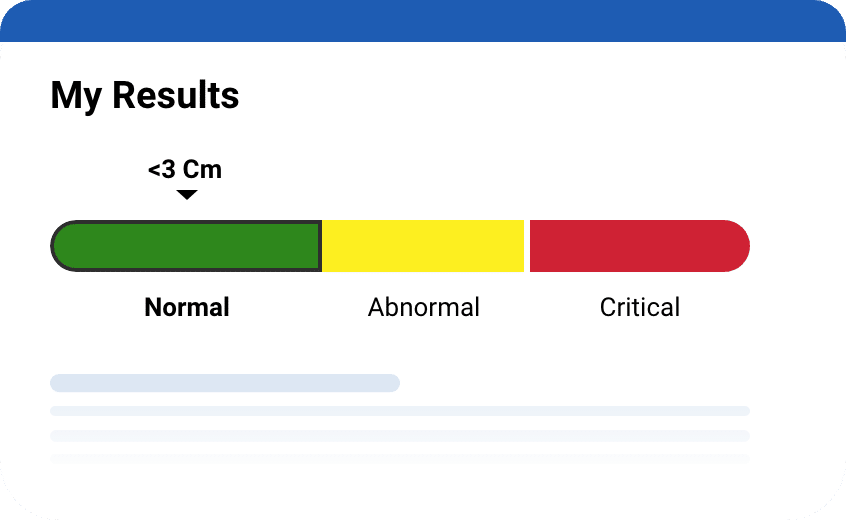
Results are color coded and easy to read so you can see which measurements are normal, borderline, or abnormal.
In general, we are looking for plaque in the arteries, which is called atherosclerosis. We examine the carotid arteries in your neck and the peripheral arteries in your legs, as well as the abdominal aorta. (We do not screen the coronary arteries, the arteries surrounding the heart.)
Atherosclerosis is a disease of progression. Its progression can be slowed or stopped altogether by medication or lifestyle changes, such as stopping smoking, reducing your blood sugar, doing exercise, and watching your weight. Keeping track of your blood pressure is also important.
Here is more information on the five major screening test results, below.
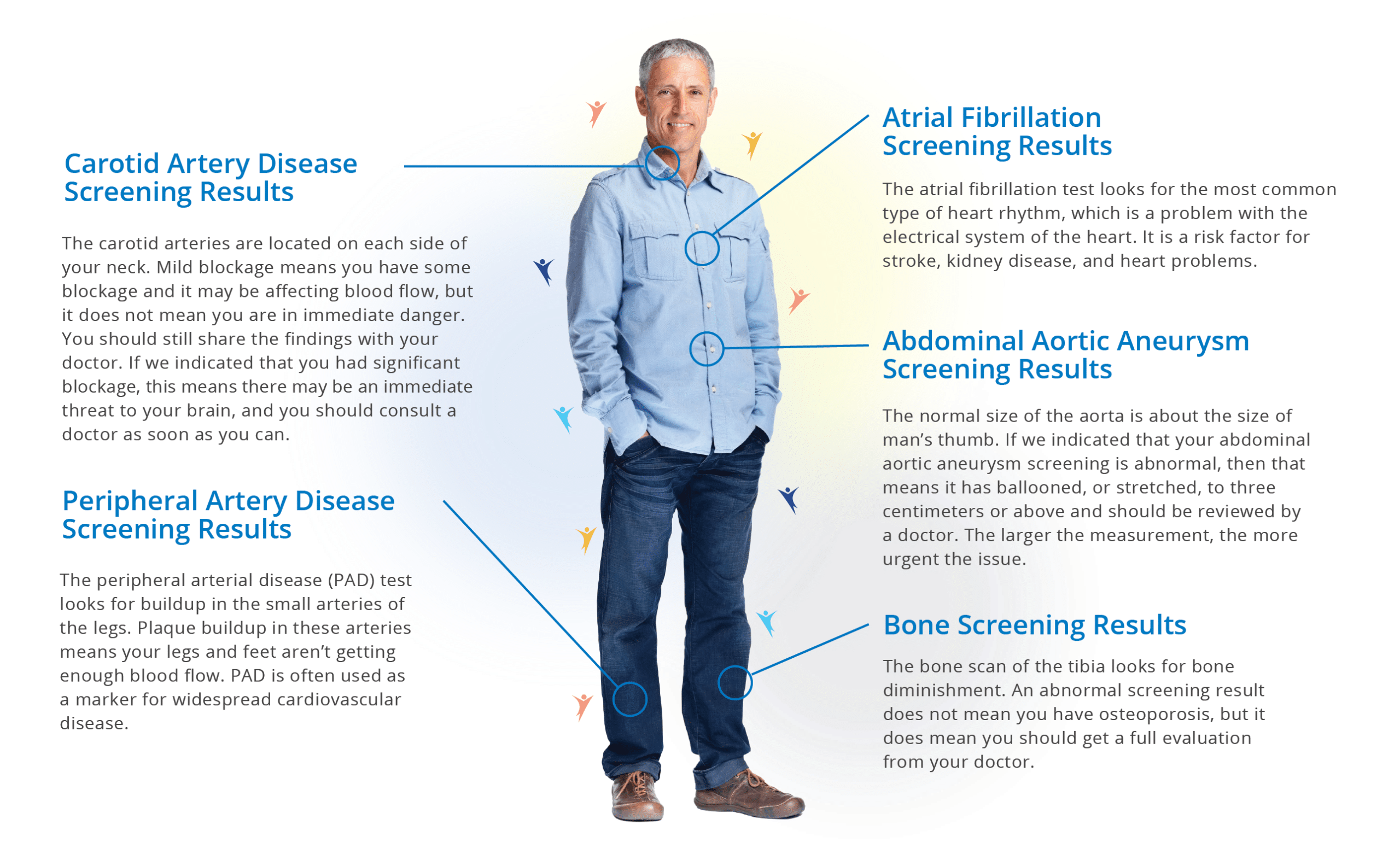
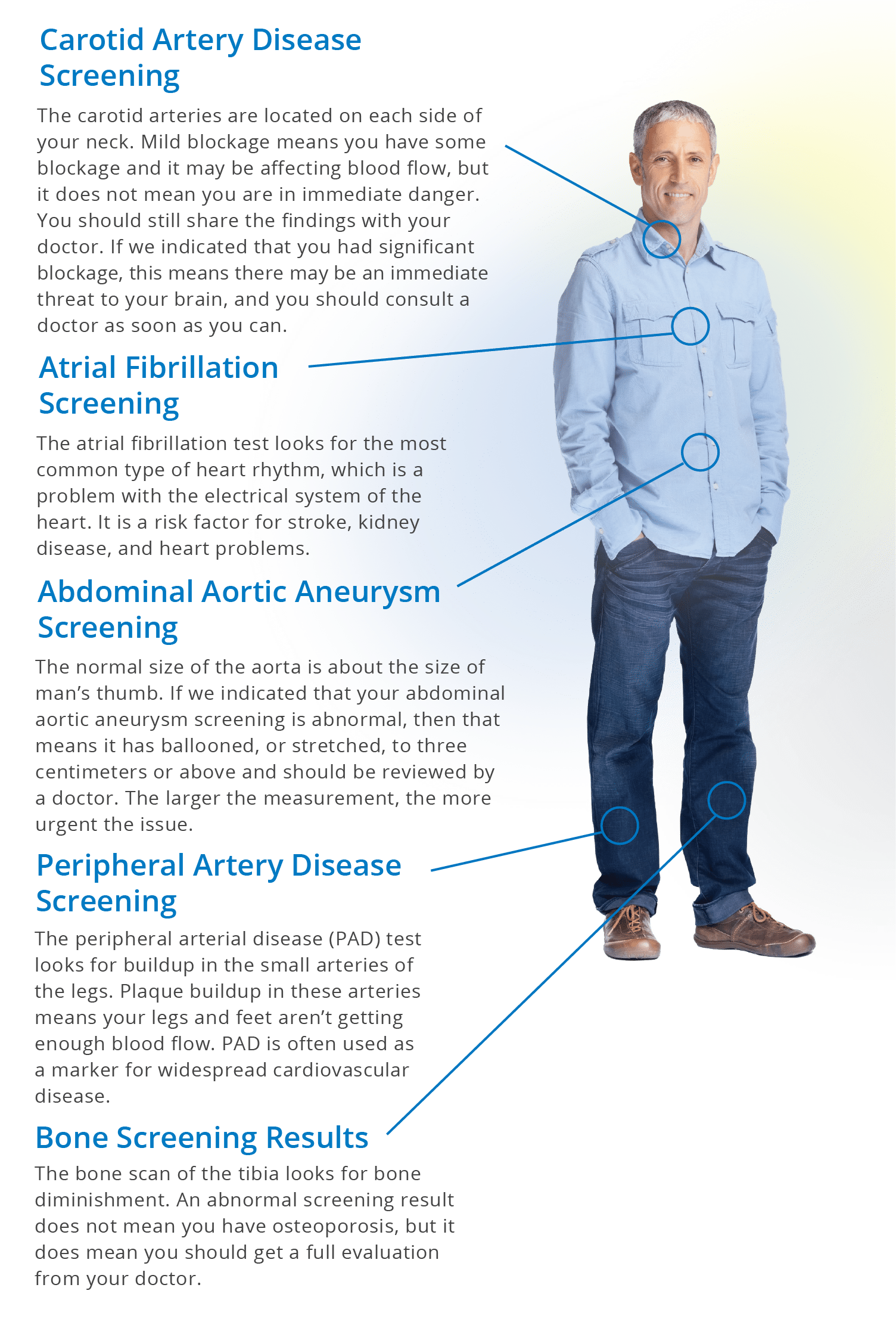
If you got additional screenings, your blood screening test results and your biometric screening scores will also be reported. Read through the screening test results carefully. Share your screening results with your doctor.
Frequently asked questions
At Life Line Screening, we prioritize quality and accuracy. Our highly trained staff adheres to strict standardized protocols during all screenings. Moreover, board-certified physicians review results for Carotid Artery, Abdominal Aortic Aneurysm, and Atrial Fibrillation screenings, ensuring adherence to the latest clinical standards.
Accessing your results is simple. Within 10 days of your appointment, you can view them online via the My Life Line results portal. If you’ve already registered, log in here. If not, follow the steps outlined in the email previously sent to you with the subject line “How to View your Results Online with My Life Line.” For assistance or to request results to be mailed to you for the fee of $15, call us at 833.445.0236.
Your screening results will be color-coded and easy to interpret, indicating normal, borderline, or abnormal measurements. Each condition screened will have a corresponding section explaining its significance for you, ensuring clarity and understanding.
Your results are tailored to you and should be shared with your primary care physician. We focus on detecting plaque in arteries, aiding in the identification of atherosclerosis and other risks of stroke and cardiovascular disease.
If abnormalities are detected, it’s crucial to consult your physician promptly. If we see something we feel should be addressed urgently by your doctor, we will tell you at the time of the screening. Depending on the screening, abnormalities may indicate potential risks such as compromised blood flow or heart rhythm irregularities. Early detection allows for proactive measures to be taken, potentially mitigating future health complications.
Ready to get your screening?
We host 14,000 events a year. Enter your zip to find an upcoming screening near you.